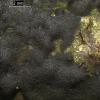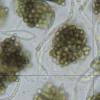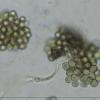
29-12-2025 17:44
Isabelle CharissouBonjour,J'aimerais savoir si d'autres personnes au

29-12-2025 17:12
 Bernard CLESSE
Bernard CLESSE
Bonjour à toutes et tous,Pourriez-vous m'aider à

12-11-2021 00:03
Lepista ZacariasHi everybody,A week ago in my fiels trip I noticed

29-12-2025 17:01
Gernot FriebesHi,I'm looking for help with this hyphomycete with

29-12-2025 08:30
Hello.A tiny ascomycete sprouting under Juniperus

29-12-2025 10:15
Hulda Caroline HolteHello, I found and collected this propoloid ascom

29-12-2025 09:38
Oskari VirtanenHi,could anyone help me identify this, I suspect P

28-12-2025 12:08
Margot en Geert VullingsThis possible Karstenia was found on the bark of d
The species is described and illustrated by Sutton 1980 (page 203) and Ellis & Ellis 1997 (fig. 634).
Thanks in advance, Eduard


I see only one photo Patellariopsis atrovinosa, 8.IIII.2016-4.jpg in my folder showing this anamorph. Surely Guy Marson would have more pics of it.
Are you aware of a recent publication by Crous et al. in which Cheirospora botryospora is included? A quote from the discussion: "Cheirospora botryospora (Helotiales, Leotiomycetes) is common on branches of Fagus sylvatica in Europe (Sutton 1980). Although its phylogenetic position has remained unclear until now, we were surprised to find that it formed a Phialophora synasexual morph in culture. The LSU sequences of the strains place it in Helotiales, with Acephala applanata (GenBank KF951051) as closest sister (Fig. 1)."

The only uploaded sequence of several of P. atrovinosa (KY462814) is quite different. Guy sequenced also the Periconia which he seems to call P. cambrensis, and it fits perfectly the teleomorph.
Cheers, Eduard



